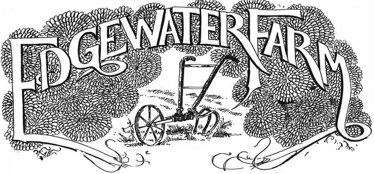This past March, Steve Wood of Poverty Lane and I had a dog and pony show at a local retirement
community. Because Steve spoke so well and explained the challenges that have confronted agriculture
in the last 40 years-specifically as a grower of tree fruit- I thought I needed to add nothing to that part
of the conversation. I veered and discussed how climate change has effected the ski areas and
winter recreational industry. A lifelong skier and full time professional ski patroller for 13 winters at Mt
Ascutney Ski gives me some perspective. I referenced a website called
Lost Ski Areas of New England that chronicles and references all the ski areas that opened and
ultimately closed their doors for business. Do you realize at one time there were surface lifts on the
Alexandria side of Cardigan Mountain? There are many reasons for the consolidation of the ski
industry, but certainly the lack of dependable winter weather conditions-lack of natural snow, warming
temps and winter rain events etc .etc. has to be the most important reason. I was amazed to see that in
the room of 30 interested seniors there were those who asked questions of us that would indicate that
this was somehow news to them. Some referenced our current Presidents position on the issue, and
stated surprise and disbelief. I have lived my life in the outdoors, but I was nonplussed that any
person whom had lived a reasonably normal life couldn’t just obviously see the weather pattern
changes over the period of their lifetimes.
George Hamilton of UNH University Extension and a tree fruit and vegetable specialist for our state
summed it up best for me when he said it’s not only the change in the weather that is important, but
the extremes we are experiencing in our seasonal weather that make up those averages. We know now
that every frontal system in New England summer weather is potentially a hail event. A rarity 40 years
ago, now many of us invest in crop insurance for the valuable crops. The 500 year floods have occurred
4 times in my 68 year lifetime. If any more ice melts off Greenland the real estate folks are going to start
carving up beach front lots. Al Gore called it an “inconvenient truth” which it is, no matter whether you
prescribe to being a republican, a democrat or a fundamentalist. To me the discussion should center on
not if its happening or not. If you think it is not happening, I would submit that your powers of
observation of the natural world that surrounds you is less than myopic, perhaps qualifying for some
sort of Mr Magoo award. It’s 2019. Are we still trying to convince rational people that climate change-
which exists for whatever reason- is afoot? And maybe we should be advancing the discussion to what
we should be doing about it?
Couple of things that we do here that accommodates climate change over the years: We increasingly
move high value vegetable crops into greenhouses and unheated high tunnels. High tunnels are
greenhouse frames with poly coverings, but are passive without heat or ventilation. We do our
beefsteak tomatoes in both high tunnels and a couple of heated greenhouses for season extension, but
due to the high value of the crop we like to be able to protect them from the extreme winds when
trellised upward and in case of a hail event with a thunderstorm. We still grow our cherry, grape and
paste tomatoes in the field. The high tunnels allow us protection and season extension with other crops
as well; cucumbers, late fall greens, ginger and occasionally peppers. Again, climate change manifests
and endangers crops with its extremes, so while we may garner protection from the elements, we also
can capitalize on season extension. In the field we have changed and altered our tillage practices and
soil management practices in regards to cover cropping. 2010 and 2011 were hard lessons learned with
extreme rain events in the summer and early fall. We experienced field erosion unlike anything we had
seen before, and that mandated some changes. The plus side of the climate change adaptations
we make, is that we believe, the soil health is benefitting. Deep and minimum tillage, permanent cover crops and the machines to achieve and maintain better soil structure and health have been a focus of ours.
We are not scientists, but family farmers who are painfully aware of climate change. Our lives in the
outdoors tells us something is afoot, regardless of whether it is carbon dioxide emmision or gods will.
It is difficult to confront people who adamantly disbelieve and argue against what is an inconvenient
truth and would rather politicize the discussion. What we try to do down on the farm to address
climate change is akin to tilting at windmills in terms of impact. But at the end of the day, these changes
and adaptive practices make us feel that we acknowledge climate change, thus making us better
farmers as well as planetary citizens.




























